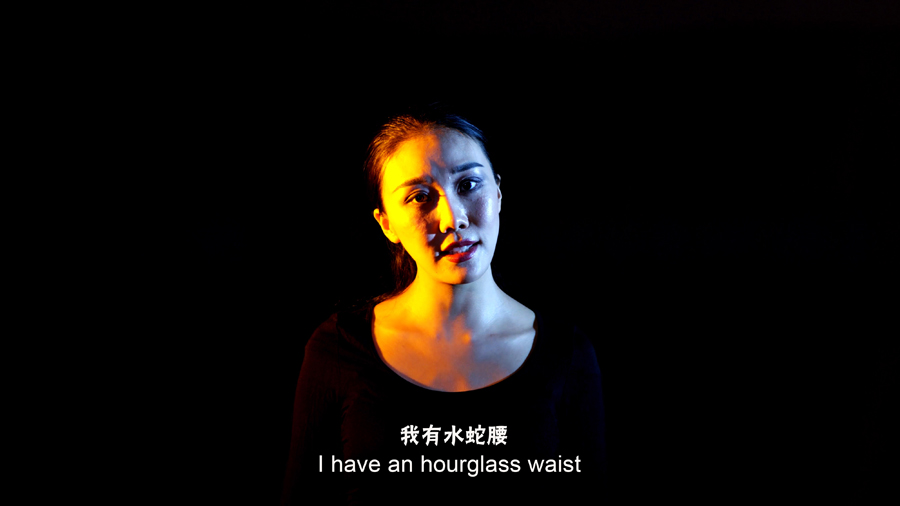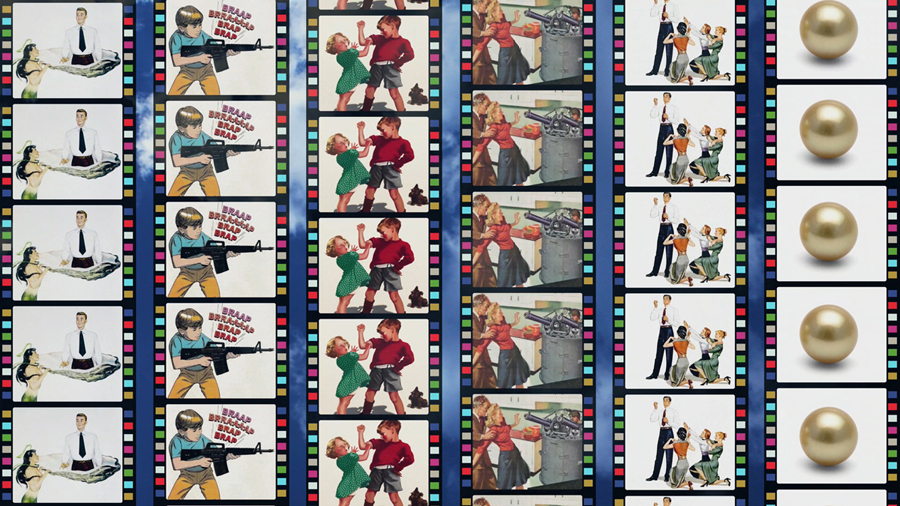Critic’s Guide: Beijing
From explorations into the varied meanings of ‘Asia’ to an uncomfortably personal solo show, highlights of the best shows across the city
From explorations into the varied meanings of ‘Asia’ to an uncomfortably personal solo show, highlights of the best shows across the city


‘Discordant Harmony: Observations of Artistic Practices in East Asia at the Transition between the 1980s and 1990s’
Beijing Inside-Out Art Museum
4 November – 4 February 2018
Beijing is the final stop in a series of exhibitions that began in Seoul in 2014 before moving to Hiroshima and then Taipei. The four curators – Chien-Hung Huang, Yukie Kamiya, Sunjung Kim and Carol Yinghua Lu (a contributing editor to frieze) – have worked towards fostering a platform for new explorations into the varied meanings of ‘Asia’ and how the connections between the contemporary artistic practices of these four countries might be considered afresh. The Beijing show, which focuses on a number of late-1980s to early-1990s case studies, continues Yinghua Lu and Inside-Out Museum’s (where she is director) interest in historical exhibitions that challenge the status quo of art historical narratives. Spread across the museum’s three floors there is no thematic link between the projects that are presented here, rather materials are collected together so as to give an insight into some of the happenings that the curators have decided are worthy of elaboration. Some events are more well-known than others, for instance, the Tokyo street-based group exhibitions, ‘The Ginburart’ (1993) and ‘Shinjuku Shonen Art’ (1994) (both featuring a young Haruki Murakami), versus the almost completely forgotten ‘Garage Show’ (1991), a three day exhibition that took place in an underground car park in Shanghai, reanimated here with photographs, posters and a recreation of a small Hu Jianping installation.

Cao Yu, ‘I have an Hourglass Waist’
Galerie Urs Meile
4 November 2017 – 28 January 2018
After a much talked about graduate exhibition at Beijing’s Central Academy of Fine Arts in 2016, Cao Yu presents her first solo exhibition at Galerie Urs Meile whose Beijing outpost recently moved from Caochangdi, the city’s second gallery area, to 798, the key locus for art. This is a highly personal presentation typified by the enlarged copy of Cao’s Chinese ID card stuck onto a wall opposite the gallery entrance and by the artist’s presence at the exhibition opening, standing in a small chalk circle in a corner and chatting with whoever came over. In one of three videos Cao stands in front of the camera tongue-in-cheek listing her many achievements in art and life, from the successful graduate show to her possession of an enviable Beijing residence permit. The entrance door’s handle is liberally smothered in Vaseline, the viewer’s first uncomfortable encounter, which is further perpetuated by ominously hanging stones implanted with shards of glass, a video of the artist urinating and the sounds of the artist and her husband eating and having sex played on loop in the gallery’s bathroom. This increasingly impressive artist’s aesthetically stark and introspective artworks successfully aim at moving the viewer towards deeper reflection, not on the artist, but on themselves.

‘Cold Nights’
UCCA
15 September – 17 December 2017
UCCA’s Central Gallery is often turned over to academically-leaning curatorial experiments; ‘Cold Nights’ is one such show. The two curators, Boliang Shen and Zhanglun Dai, have brought together four young artists, Chen Zhou, Nabuqi, Li Ran and Liu Shiyuan to engage in a rewriting of famed 20th century author Ba Jin’s novel Cold Nights. Each artist is ascribed one of the story’s four key protagonists as a basis through which to frame their reinterpretation of the text and offer a commentary on the contemporary moment. Three newly produced video works are combined with Nabuqi’s lamps, mirrors, a glass and plant installation, and an intermittently flashing light that floods the whole space, which act as a reminder of the works’ intended co-existence, just like the characters in Ba’s eponymous novel.
This will be UCCA’s last exhibition before a break for renovations and a summer 2018 reopening, following Myriam and Guy Ullens’ announcement that they would be removing their patronage. A group of investors led by ad man Jason Nanchu Jiang will finance UCCA’s transformation into a non-profit space under the continued directorship of Philip Tinari.

Chen Chieh-jen, ‘A Field of Non-Field’
Long March Space
28 October 2017 – 4 February 2018
For his second solo show at 798’s Long March Space, seven years after the first, the Taiwanese artist Chen Chieh-jen presents a newly produced video work, A Field of Non-field (2017), which is contextualized with several previously made videos and documentation. The walls of the gallery have been painted grey so as not to jar against Chen’s signature black and white videos which are marked by a focus on his homeland and the often brutally felt political and socio-economic shifts that Taiwan has experienced during and since the 38-year period of marshal law that ended in 1987. A Field of Non-field takes the artist’s younger brother as its key protagonist, who in the 1990s attempted to commit suicide after losing his job, a result of much of Taiwan’s industry moving to China. In the film we see a mock funeral procession with the brother carried on a pyre. Isolated and alone, he is in stark contrast to an accompanying group of women who sing in Taiwanese Hakka – they themselves are formed of a group of actors who have been protesting against their job losses for more than ten years.

Lu Yang, ‘Encephalon Heaven’
M Woods
28 October – 11 February 2018
Around the corner Lu Yang’s garish digital aesthetic couldn’t be further from Chen Chieh-jen’s sombre visions. Lu takes over the privately owned M Woods Museum with three newly commissioned works, accompanied by multifarious sculptural objects, older video works, and furnished with elaborate mandala patterned carpets and Japanese video game-style wall paper plastered onto almost all spare wall space. In Electromagnetic Brainology (2017), Lu has constructed a kind of temple arrangement complete with pews and a central altar surrounded by four screens displaying four invented gods, made with the Japanese freeware animation software MikuMikuDance, gyrating to a specially created jittering electronic music soundtrack. Other works continue the theme of the interrelation of religion, technology and science. Lu’s constructed DBS (deep brain stimulation) crowns and TMS (transcranial magnetic stimulation) wands – outlandish golden totems – are everywhere attached to imagined deities. Elsewhere we are invited to kneel at a small altar, but have to use an iPad’s VR app to bring to life the otherwise invisible dancing god. ‘Hip hop to Goa trance, punk, gothic, and glam rock street styles, gaming, anime, and the practice of Otaku’, as the press release states; the show illustrates the full schizophrenic breadth of Lu’s influences.

Andres Serrano, ‘An American Perspective’
5 November 2017 – 25 February 2018
Dan Graham, ‘Greatest Hits’
7 November 2017 – 25 February 2018
Red Brick Art Museum
Opening days apart are the first solo shows in China of these two American artists, Serrano known as a photographer of controversial subject matter and Graham as a conceptual installation artist. The shows are separate, Serrano occupying a large space in the heart of the museum’s interior, beginning with the infamous Piss Christ (1987) and ending with the infamous image of Donald Trump – the show fortuitously coinciding with his first presidential visit to China. Between these two works are a selection from Serrano’s defining series, including ‘The Morgue’ (1992) and ‘Torture’ (2015), plus a new set of photographs shot over ten days in Beijing, in which varied subjects are shot in traditional Chinese wedding garb against Serrano’s technicolour portraiture backdrops. Graham’s show includes two large glass pavilions, one inside and one outside, where it sits most successful: the traditional Chinese garden architecture finding an ally in Graham’s exploration of architecture’s effects on our movements and interactions.

Yanyan Huang, ‘Cloud Tempo’
Salt Projects
4 November – 10 December 2017
Salt Projects is a tiny space nestled deep in Beijing’s hutongs, the ancient narrow alleyways and cramped courtyards teeming with the activities of daily life spilling out into public space. Hutongs have often played host to some of Beijing’s most progressive independent art spaces, offering an alternative to Beijing’s commercial gallery zones. Salt Projects founders – Yuan Fuca and Liya Han – opened their 17 square metre space last year with a focus on performance practice, yet in their last two exhibitions, prints and paintings have been the mainstay. Yanyan’s three ink and gouache canvases of flowers and faunas – one practically the same height and width of the space – are all sweeping brushstrokes and light colours, close to abstraction in their densely packed surfaces and posit anxious visual responses to the chaotic and uncontrollable passing of time; a painted poetics on the churning of life, fitting within the swirling activity of its setting.
Main image: Cao Yu, The End, 2017, concrete and glass, installation view. Courtesy: the artist and Galerie Urs Meile, Beijing






















